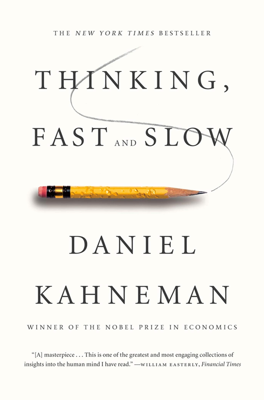Anchors
Anchoring Effects and Influences
Experiment Introduction: Kahneman describes an experiment where a rigged "wheel of fortune" that stops only at 10 or 65 influences students' estimates about the percentage of African nations in the UN. Despite the randomness of the wheel, the students' estimates adhered closely to the numbers they observed, demonstrating the anchoring effect, where initial exposure to a number influences subsequent judgments.
Definition and Robustness of Anchoring Effects: Anchoring impacts estimations significantly and is identified as one of the most robust phenomena in psychological experiments. It occurs when the initial number seen influences and limits the range of subsequent estimates regardless of the number's relevance.
Mechanisms Causing Anchoring: Kahneman differentiates between two types of mechanisms causing anchoring:
- Adjustment: Involves a conscious attempt (System 2 operation) to adjust from the anchor point. This adjustment often stops prematurely leading to insufficient correction from the anchor.
- Priming: An automatic, non-conscious effect (System 1 operation) where the initial number primes the mind with associated responses, skewing perception and judgment.
Empirical Evidence and Examples:
- Subjects adjust estimates of George Washington's presidency starting year or the boiling point of water at Mount Everest’s peak once an anchor is given.
- In another study, asking about average temperatures or car prices, the anchors affected recognition of related words (like 'sun' for higher temperatures or luxury car brands for higher prices) and influenced final estimates.
Quantifying Anchoring: The anchoring index is used to measure the impact, often showing significant percentages in experiments, indicating a strong influence of the initial numbers provided on final judgments. Kahneman illustrates this with examples from experiments involving the height of redwoods and donation amounts for environmental purposes.
Real-World Implications:
- Anchoring affects professional judgments as well, such as real estate evaluations where different starting prices significantly influence final valuations despite agents’ belief they are unaffected.
- Negotiations and financial decisions often hinge on initial figures that serve as anchors, subtly guiding subsequent decisions and expectations.
Strategies to Mitigate Anchoring Effects:
- Encouraging deliberate consideration of reasons to move away from an anchor.
- Focusing on other party's minimal acceptance conditions in negotiations.
- Actively "thinking the opposite" to counterbalance potential biases introduced by anchors.
Discussion of Dual Process Involvement: Anchoring showcases the dynamic interplay between System 1 (automatic, intuitive processes influenced by priming) and System 2 (deliberative processes that adjust based on more complex reasoning). Even awareness of the anchoring process does not necessarily immunize one from its effects.
Concluding Remarks on Influence and Autonomy: Anchoring effects challenge the notion of independent rational decision-making. They expose the susceptibility of human judgment to seemingly irrelevant information, revealing the pervasive influence of environmental cues on our thoughts and actions.
